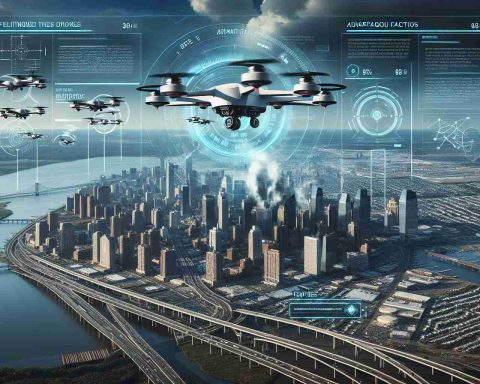Revolutionary Space Tracking
In a groundbreaking achievement, Chinese scientists have successfully identified around 1,400 of Elon Musk’s Starlink satellites within a mere 12 hours. This remarkable feat was accomplished using a fleet of 99 Chinese satellites, each equipped with advanced laser technology and tracking devices, as reported by the South China Morning Post.
Experts note that the military implications of Starlink’s satellite network have gained attention, particularly in light of ongoing global conflicts like the one in Ukraine. Wu Yunhua, who leads the Aerospace Control Department at the Nanjing University of Aeronautics and Astronautics, emphasized the growing need for nations to monitor and understand the operational status of such satellite systems amid increasing militarization in space.
Previously, locating such a vast number of satellites posed significant challenges requiring complex orbital calculations. Currently, approximately 7,000 Starlink satellites are in orbit, with around 6,874 actively operational. Musk’s ambitious plans aim for nearly 42,000 satellites, raising concerns in the scientific community regarding potential disruptions to astronomical observations.
Chinese researchers utilized a novel approach inspired by whale hunting techniques. Their method, powered by a cutting-edge binary artificial intelligence algorithm, mirrors the whales’ efficient energy use while hunting small fish, allowing for effective satellite tracking in the crowded space environment. This innovative strategy signifies a new era of advances in space observability.
Heightened Vigilance in a New Space Age
The successful tracking of 1,400 Starlink satellites by Chinese scientists marks a pivotal moment not only in technological capability but also in the geopolitical landscape. As nations rapidly advance their space surveillance capabilities, the implications for global security and military strategy are significant. The ease with which satellites can now be tracked raises critical concerns regarding national defense, surveillance, and the potential for an arms race in low Earth orbit.
The cultural aspect of this advancement also cannot be ignored. As space becomes increasingly shared among nations and private enterprises, public consciousness around space travel and its implications for economic disparities will evolve. The democratization of space, embodied in initiatives like SpaceX’s Starlink, could lead to a more connected world but may also exacerbate existing inequalities in digital access, with some regions benefitting disproportionately from satellite internet connectivity.
From an environmental perspective, the rise of satellite constellations brings potential long-term impacts on space debris and astronomical research. Experts warn that more satellites increase the risk of collisions, creating a perilous environment for future exploration. As monitoring systems improve, collisions and their aftermath threaten both the integrity of orbital ecosystems and the burgeoning industry of space tourism.
As we witness these developments, it is clear that the future of space is not just about exploration but also diplomatic engagement, potential cooperation, and the urgent need to establish regulations governing a crowded and increasingly contentious domain.
China’s New Leap in Space Tracking: A Game Changer for Satellite Monitoring
Introduction
In a significant development within the realm of space observation, Chinese researchers have successfully tracked approximately 1,400 of Elon Musk’s Starlink satellites within just 12 hours. This incredible achievement has been made possible through a sophisticated operation involving 99 Chinese satellites, which are equipped with advanced laser tracking technology. The implications of this advancement stretch far beyond just satellite tracking, raising concerns and considerations in both military and scientific communities globally.
Features of the Tracking System
The tracking system utilized by Chinese scientists involves several key features:
– Advanced Laser Technology: Employing laser technology enhances the detection and identification capabilities of satellites, providing more accurate data.
– Artificial Intelligence Algorithms: The novel binary artificial intelligence algorithm employed draws inspiration from natural predator-prey dynamics, optimizing energy usage in satellite tracking.
– Fleet of Satellites: The use of 99 satellites for tracking demonstrates a robust infrastructure designed for extensive monitoring, enabling broader coverage and efficiency.
How It Works
The method draws parallels to whale hunting practices where efficiency in locating and capturing prey is paramount. By mimicking these natural techniques, researchers can effectively navigate the densely populated orbital environment, overcoming previous challenges related to satellite tracking that required complex calculations and significant resources.
Military Implications
The strategic monitoring of satellites like those in the Starlink network cannot be ignored, particularly given the context of ongoing global military tensions, such as the conflict in Ukraine. Wu Yunhua, a prominent figure in aerospace studies, highlights the necessity for countries to be vigilant regarding the operational status of such satellite networks. The military applications of satellite technology are becoming increasingly relevant, prompting nations to invest in advanced tracking capabilities.
Challenges and Concerns
While the recent success in tracking satellites marks a leap forward, there are several associated challenges and concerns:
– Astronomical Observations: The proliferation of satellites, particularly with Musk’s plans to launch a total of around 42,000, presents risks to astronomical research and observations, as the brightness and number of satellites can interfere with observations of celestial bodies.
– Space Debris: As the number of satellites increases, so does the potential for space debris, which poses hazards not only to satellite operations but also to manned space missions.
Trends and Predictions
The ongoing advancements in satellite tracking technologies and the rising number of satellites in orbit underscore a growing trend towards militarization and commercialization of space. As nations continue to develop more sophisticated tracking systems, we can anticipate emerging technologies aimed at ensuring the safety and security of satellites in an increasingly crowded environment.
Conclusion
The successful tracking of Starlink satellites by Chinese researchers marks a turning point in how nations monitor space assets. The technological innovations developed through this research are not only significant for military applications but also paves the way for further advancements in space observation, necessitating ongoing discussions regarding the implications of increased satellite presence in our orbit.
For more insights on space technology and innovations, visit Space.com.




















